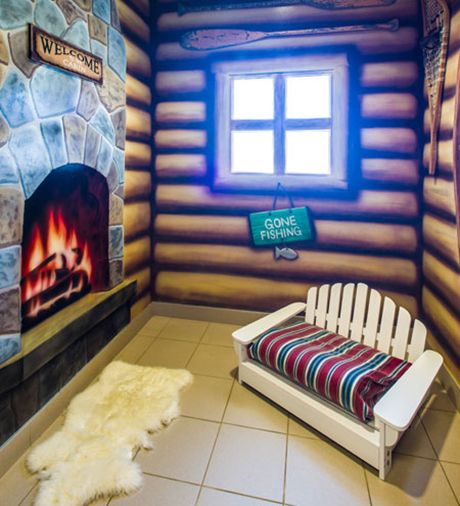4 ways boarding makes money for veterinary hospitals
Its true that veterinary practices earn more per square foot through medicine than through boarding, grooming or retail. But its also true that veterinarians can make good money on pet services. (And where do you think all those boarders will go for their veterinary care?)

Patients can rest easy in this luxury boarding suite at Allandale Veterinary Hospital in Barrie, Ontario. Photo by Mike Guibault, MG Photography Studio.You didn't go to vet school to board pets.
But if you did go ahead and get that veterinary degree, and you did want to take advantage of your built-in referral network of pet owners to provide a service that's better when you do it because it means more visibility for your veterinary services, well, one speaker at this year's Western Veterinary Conference (WVC) won't talk you out of it.
In less than an hour, practice management speaker Greg Taylor, CEO of animal housing designer and manufacturer Mason Co., provided a Las Vegas audience a relatively unbiased look at the revenue benefits, costs to build, and design considerations involved in boarding pets.
If you're adding boarding, does that mean you're building or remodeling?
Then we think you'll really want to come to the longest-standing, most in-depth conference on the topic: HospitalDesign360.
Here's a rundown of a few tips:
1. Treat boarding as a business, not a hobby. Consider more than 40 runs, and lean toward 80 or so, Taylor recommended. Don't build up another business if you're not going to have the potential to “move the revenue needle,” he says.
2. Care for cats, but don't jump into cat boarding. A good ballpark, Taylor says, is that 10 percent or less of your spaces should be for cats. “Go slow,” he recommends, as you consider buying the feline housing cabinets. “They're easy to add.”
3. If you add boarding, consider space for bathing and doggie daycare too. You've got veterinary clients who trust you and would likely board their pets with you. And if they'll board, who will they choose for bathing and doggie daycare? You again. “They trust you more than pet resort owners,” Taylor says. “They think you're really in it for the pet.”
4. Figure out your approach-and do that. Some facilities are open 24 hours, with round-the-clock staffing and anytime pickup. Other facilities don't want the hassle.
Some facilities install webcams everywhere and cater to “helicopter” pet parents, Taylor says. These clients want to see their pets all the time and will call in if “a dog doesn't drink once or twice in 10 minutes.” Other facilities don't want to mess with phone calls or texts all day.
Some facilities spend a ton of money on luxury boarding and charge a premium for it. Other facilities don't have the clientele looking for that.
Regardless of your approach, focus on the basics: friendly and knowledgeable staff, a safe and healthy environment, and less noise and bad smells. “Find out what you do well, and do that,” Taylor says.
But before you decide to limit your boarding facility to the basics-standard workday hours, no frills, nothing special-Taylor reminded the WVC audience of a big regret many veterinary practice owners have had over the years: “They wish they'd put in more luxury suites.”
Don't overestimate or underestimate the power of luxury boarding or how much today's pet owners appreciate, and pay for, “beautiful” boarding.
“I tell my team, the market wants beautiful,” Taylor says. And that's a trend likely to continue.